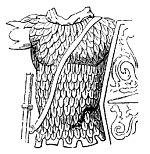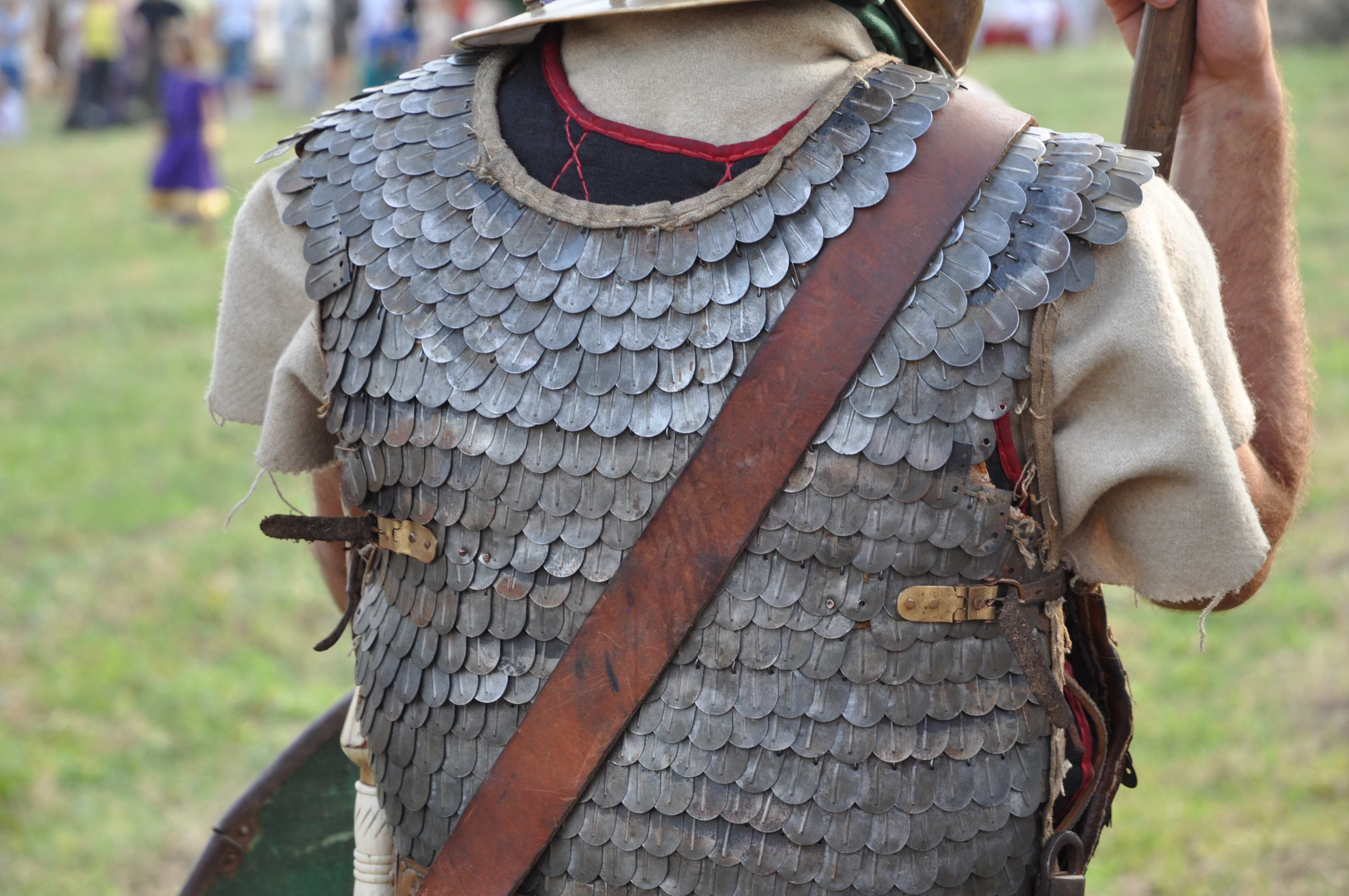
 The Romans would wear a tunica under the lorica segmentata. The tunicas are made from two rectangular pieces of cloth that are woven to fit the soldier and sewn together at the sides.
The Romans would wear a tunica under the lorica segmentata. The tunicas are made from two rectangular pieces of cloth that are woven to fit the soldier and sewn together at the sides.
They would also wear a lorica hamata, which was a type of chainmail armor used by the soldiers in the 3rd century bc to the 4th century AD. It was used by the legionary and auxiliary troops. There were many types of this armor. The arm armor was called manica, which was a type of arm guard with overlapping curved pieces of metal, typically iron or bronze. It had leather straps and was worn mostly by soldiers.
 The lorica plumata was a type of Roman armor, and its name translates to "feathered cuirass". This was because it looked as if it was covered in feather like scales called plumes. The lorica plumata was a sleeveless armor without shoulder guards. It was most likely exclusively used by military leaders due to it being very expensive to make, a combination of chainmail and scales. Some think that it was just parade armor since it was flimsy and small.
The lorica plumata was a type of Roman armor, and its name translates to "feathered cuirass". This was because it looked as if it was covered in feather like scales called plumes. The lorica plumata was a sleeveless armor without shoulder guards. It was most likely exclusively used by military leaders due to it being very expensive to make, a combination of chainmail and scales. Some think that it was just parade armor since it was flimsy and small.
 The lorica squamata was a type of scale armor that was used in the Roman republic. It was made from small metal scales sewn to a fabric backing. We have not found any examples of the lorica squamata, but we have found fragments of the shirts, and some scales. It was made by sewing small pieces of iron or brass together on a leather backing.
The lorica squamata was a type of scale armor that was used in the Roman republic. It was made from small metal scales sewn to a fabric backing. We have not found any examples of the lorica squamata, but we have found fragments of the shirts, and some scales. It was made by sewing small pieces of iron or brass together on a leather backing.